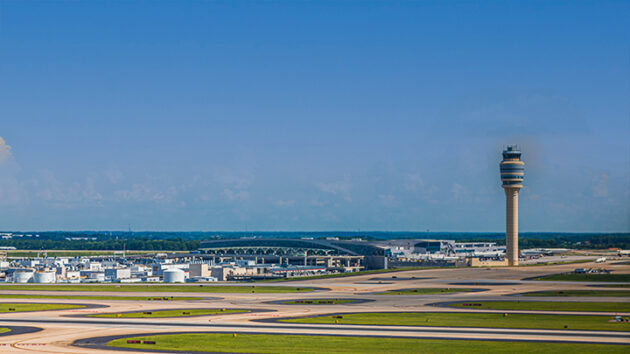FAA NextGen Program Air Traffic Control Centers
Posted on September 21st, 2022
Want to learn more about the progress the FAA made with NextGen? Improvements over time have fundamentally changed the way the National Airspace System operates. Check out the FAA NextGen program. Its objectives include using new technologies and methods to increase the safety, efficiency, capacity, access, flexibility, predictability, and resilience of the National Airspace System (NAS). While at the same time, achieve a reduction in the environmental effect of aviation with a new way of managing air traffic through Trajectory Based Operations.
Better Weather Data for Improved Flight Planning
NextGen Weather harnesses massive computing power with unprecedented advances in numerical weather forecasting. They are transforming weather information into airspace limitations and modernized information management services. With this powerful combination, NextGen Weather can provide customized flight weather products within the NAS, helping flight controllers and operators develop reliable flight plans, make better decisions, and improve on-time performance.
The flying public will experience fewer weather delays, which means more occasional departure and arrival delays, a reduction of flight cancellations and refueling stops, and increased flight schedule dependability. NextGen Weather is achieved with collaboration between the FAA, National Oceanic and Atmospheric Administration, and NASA.
Air Route Traffic Control Centers (ARTCCs)
The ARTCCs are the advanced centers or en-route centers directing flights. These facilities control aircraft flying in flight information regions (FIRs) airspace at high altitudes between airport approaches and departures. Below are selected ARTCC facilities ensuring the safe transit of commercial and private planes in the U.S.
East Coast ARTCCs
ZBW – Boston ARTCC, located in Nashua, New Hampshire, is responsible for Greater Boston and New England airports. Additionally, they cover airspace over Connecticut, Vermont, Massachusetts, Rhode Island, Maine, New Hampshire, New York state, and Northeast Pennsylvania.
ZJX – Jacksonville ARTCC
ZMA – Miami ARTCC
ZTL – Atlanta ARTCC, the Atlanta Center, is the busiest air traffic control facility globally monitoring millions of annual flights.
ZDC – Washington ARTCC, is the second busiest center in the U.S. They oversee the Washington D.C. area airports, New York Metropolitan Area, and Philadelphia, among many others.
ZNY – New York ARTCC
Central U.S. ARTCCs
ZAU – Chicago, Greater Chicago airspace, all Chicago public and private jet airports, and Milwaukie, WI, Airspace.
ZDV – Denver ARTCC. Denver manages the largest airport in the U.S., DEN, in addition to Aspen, Colorado Springs, Eagle, Rifle, and Telluride.
ZFW – Fort Worth is one of the two Texas ARTCC facilities overseeing the busy airspace and airports of Dallas and Dallas Fort Worth metroplex. Additionally, they cover parts of Louisiana, Oklahoma, and Arkansas.
ZHU – Houston covers Houston’s public and private jet airports and airspace of approximately 280,000 square miles of Texas, Louisiana, Mississippi, and Alabama.
ZLC – Salt Lake City ARTCC
West Coast ARTCCs
ZLA – Los Angeles air traffic control in Southern California, Utah, Nevada, and Arizona. Airspace in the ZLA jurisdiction encompasses 177,000 square miles. This includes Southern California’s major commercial and private airports at LAX and Van Nuys.
ZOA – Oakland ARTCC. Oakland is the largest and most comprehensive facility on the West Coast. KZOA air traffic operations manage the largest amount of international airspace in the world in a single facility.
ZSE – Seattle ARTCC
Included in yearly plan updates is the overview of NextGen’s accomplishments in improved surveillance, more precise navigation, enhanced safety, and reduced environmental impacts. The document also looks at upcoming innovations, presents operators and airports with a guide to NextGen investments, and provides a timeline and summary of crucial FAA work activities planned for the coming years.
